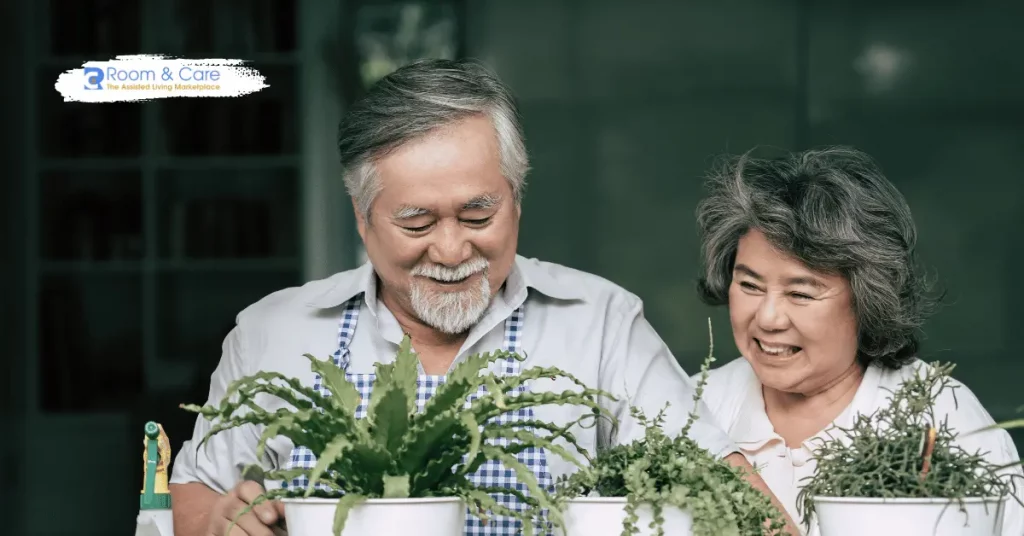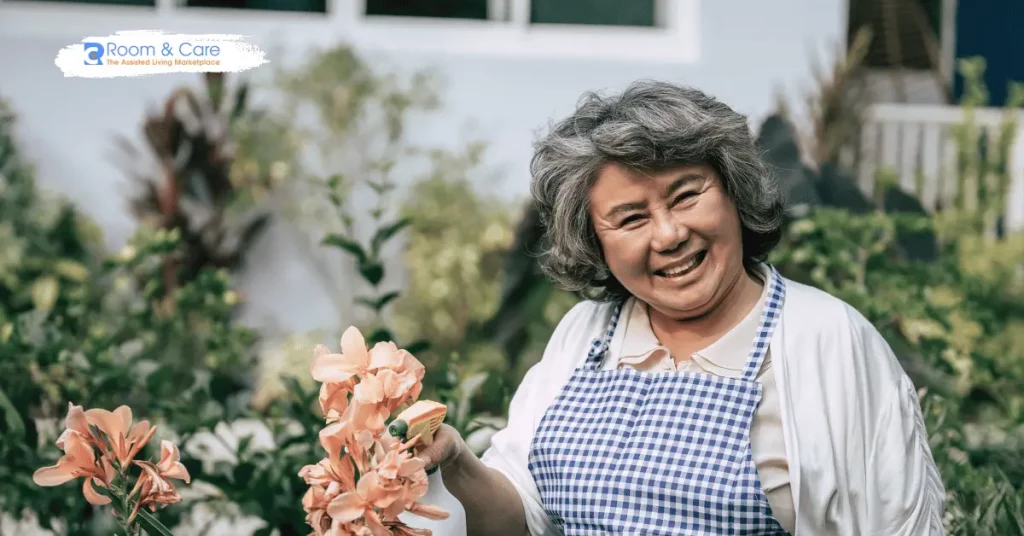

Gardening offers a multitude of benefits for people of all ages, but it holds particular significance for seniors. Engaging in gardening activities provides seniors with a sense of purpose, promotes physical health, and fosters mental well-being. In this comprehensive guide, we’ll explore various gardening activities for seniors, considerations for getting started, and practical tips to ensure a fulfilling and safe gardening experience.
Gardening is more than just a hobby; it’s a therapeutic activity that offers numerous benefits, especially for seniors. Here are some key advantages:
Gardening activities can help seniors stay physically active, which is essential for maintaining strength, flexibility, and overall health. Activities such as planting, weeding, and watering plants involve gentle movements that can improve cardiovascular health and enhance motor skills.
Gardening has been shown to reduce stress, anxiety, and depression. The act of nurturing plants can provide a sense of accomplishment and purpose, which is particularly beneficial for seniors who may feel isolated or disconnected.
Engaging in gardening activities can also stimulate cognitive functions. Planning a garden, learning about different plants, and problem-solving to address gardening challenges can help keep the mind sharp and active.
Gardening can be a social activity, whether it’s working in a community garden or sharing gardening tips with friends and family. These interactions can help combat loneliness and promote a sense of community.
Before diving into specific gardening activities for seniors, it’s essential to consider a few factors to ensure a safe and enjoyable experience.
Ensure that the garden area is easily accessible for seniors. Raised garden beds, container gardens, and vertical gardens can be excellent options to minimize bending and reaching. Consider adding wide, stable pathways to accommodate mobility aids if necessary.
Safety should always be a priority. Provide seniors with appropriate gardening tools that are easy to use and have ergonomic handles. Encourage the use of gloves to protect hands and sturdy shoes to prevent slips and falls.
Consider any existing health conditions that may affect gardening activities. For instance, seniors with arthritis may benefit from tools designed to reduce strain on the joints, while those with cardiovascular issues should avoid heavy lifting and prolonged exposure to the sun.
Take into account the local climate and soil conditions. Choose plants that are well-suited to the environment to reduce the need for intensive maintenance. Additionally, ensure that the garden has adequate shade and water sources to keep seniors comfortable and hydrated.

With these considerations in mind, let’s explore a variety of gardening activities that are particularly well-suited for seniors and can be easily implemented in assisted living facilities, adult family homes, and other residential communities.
Container gardening is an excellent option for seniors as it offers flexibility and ease of access. Containers can be placed on patios, balconies, or even indoors, making gardening accessible to those with limited mobility.
Raised bed gardening reduces the need for bending and kneeling, making it more comfortable for seniors. It also allows for better control over soil quality and drainage. This method is particularly suitable for assisted living facilities and adult family homes where space might be limited.
Vertical gardening utilizes structures such as trellises, wall planters, and hanging baskets to grow plants vertically. This method is ideal for maximizing space and reducing the need to bend or kneel.
Sensory gardens are designed to engage all five senses, providing a rich, stimulating experience. They can be particularly beneficial for seniors with dementia or other cognitive impairments and can be integrated into the outdoor spaces of assisted living facilities and adult family homes.
Community gardens offer a social aspect to gardening, allowing seniors to interact with others and share their love of gardening. This can help reduce feelings of isolation and promote a sense of community. Many assisted living facilities and adult family homes support community gardening projects.
Therapeutic gardening focuses on using gardening activities to promote physical and mental health. It can be tailored to meet the specific needs of seniors, including those with disabilities or chronic conditions.

To ensure a safe and enjoyable gardening experience, consider the following practical tips:
Encourage seniors to stay hydrated by drinking plenty of water before, during, and after gardening. Provide sun protection such as hats, sunglasses, and sunscreen to prevent sunburn and overheating.
Recommend lightweight, breathable clothing that covers the skin to protect against sun exposure and insect bites. Sturdy shoes with good traction are essential to prevent slips and falls.
Provide gardening tools with ergonomic handles to reduce strain on the hands and joints. Tools with long handles can help minimize bending and reaching.
Encourage seniors to take regular breaks to rest and avoid overexertion. Gardening should be an enjoyable activity, not a strenuous one.
Teach safe lifting techniques to prevent injuries. Seniors should bend at the knees, not the waist, and lift with their legs, not their back.
Consider installing drip irrigation systems or using self-watering containers to reduce the need for manual watering. This can make gardening more manageable and less physically demanding.
Selecting the right plants is crucial for a successful and enjoyable gardening experience. Here are some factors to consider:
A well-thought-out garden plan can help seniors stay organized and maximize their gardening efforts. Consider these steps:
Gardening can be a wonderful way to spend time with family and friends. Involve loved ones in gardening activities to create shared experiences and strengthen bonds.
Many communities have gardening clubs or groups that offer support, resources, and social interaction. Joining a gardening club can provide seniors with a sense of belonging and access to valuable gardening advice.
Yes, gardening can be adapted to accommodate mobility issues. Raised beds, container gardens, and vertical gardening can reduce the need for bending and reaching. Additionally, ergonomic tools and proper planning can make gardening safe and enjoyable.
To avoid overexertion, seniors should take regular breaks, stay hydrated, and use ergonomic tools. It’s also important to choose gardening activities that match their physical capabilities and to avoid heavy lifting.
The best plants for seniors to grow are those that are low-maintenance and suited to their local climate. Examples include herbs like basil and mint, flowers like marigolds and petunias, and vegetables like tomatoes and lettuce.
Gardening can provide sensory stimulation, promote a sense of accomplishment, and reduce stress and anxiety for seniors with dementia. Sensory gardens with a variety of textures, scents, and colors can be particularly beneficial.
Essential tools for senior gardeners include ergonomic hand tools, watering cans with long spouts, lightweight hoses, and garden kneelers. These tools can help reduce physical strain and make gardening more comfortable.
Gardening activities for seniors offer a wealth of benefits, from physical health and mental well-being to cognitive stimulation and social interaction. By considering accessibility, safety, and individual health conditions, seniors can enjoy a fulfilling and safe gardening experience. Whether it’s container gardening, raised bed gardening, or community gardening, there are numerous ways for seniors to engage in this rewarding activity.
At Room and Care, we understand the importance of finding the right environment for seniors to thrive. Our platform offers direct access to the best assisted living facilities, adult family homes, memory care facilities, nursing homes, and independent living communities, all without any referral fees or middlemen.
Start your gardening journey today and reap the countless benefits that come with nurturing your own green space!